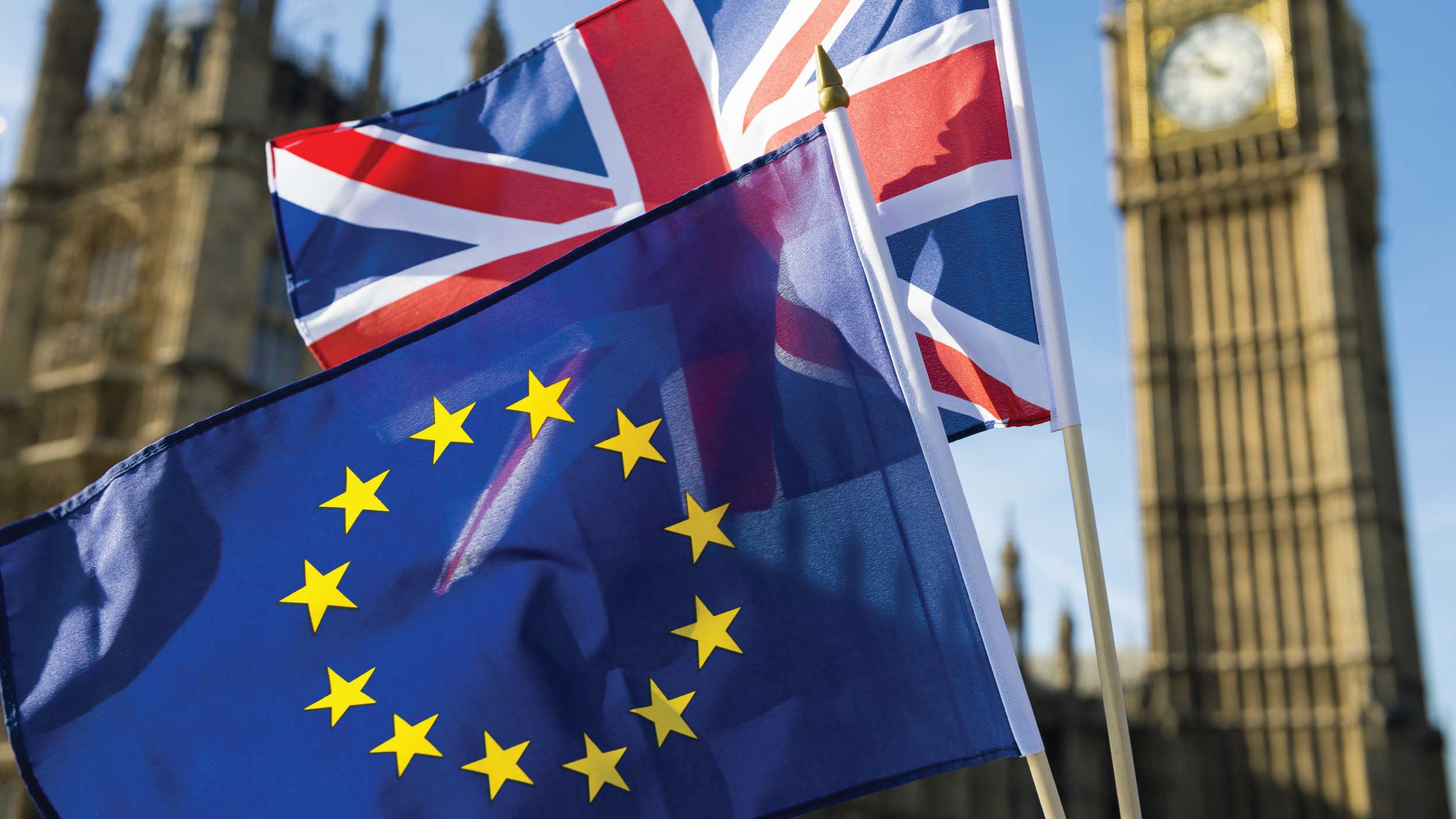
Tariff pain relief but not the full cure
Welcome to Uncommon Truths, Paul Jackson and Andras Vig’s regular in-depth look at the big topics impacting markets.

The first EU-UK summit on 19 May sent a clear signal that London and Brussels are ready to open a new chapter in their relationship. The outcome marks a shift in the relationship from the immediate, fractious, post-Brexit phase towards a more stable and constructive dynamic. It also projects European unity in the face of a challenging geopolitical context, including the ongoing war in Ukraine and the Trump administration moving to scale down its involvement in European defence.
However, the summit was only a starting point. While a degree of progress was made on defence, trade, youth mobility, and fisheries, the framework of the post-Brexit relationship as set out in the Trade and Cooperation Agreement remains largely intact. Trust is being rebuilt, and further negotiations will be required to implement the roadmap outlined during the summit. It was a first, incremental step towards a political and trade rapprochement, rather than a dramatic leap forward.
The absence of a defence and security partnership was a key omission of the 2020-2021 Brexit agreements. The partnership agreed at the summit reflects the depth of EU-UK ties and shared security interests. While following a similar framework to agreements with Japan or Norway, the UK one is broader in scope, covering the full spectrum of security challenges facing both the EU and the UK.
The partnership also strengthens coordination on foreign policy issues. The UK Foreign Secretary and EU High Representative will meet for a dialogue every six months, with regular exchanges on security and defence. The UK Foreign Secretary will be invited to relevant EU Council meetings.
On industrial cooperation, the partnership opens the door for the UK to join EU programmes on defence cooperation, including allowing British defence firms to join consortia bidding for funding under the EU SAFE initiative.1
However, a further agreement will be needed to formalise UK access, likely to be concluded by the end of 2025. Tough negotiations are expected, particularly with France pushing for strict conditions. These are likely to include a UK financial contribution and a cap on UK firms' access to EU funds, potentially modelled on the current 35% cap for third-country entities under the European Defence Fund.
The most significant outcome of the summit on trade is a commitment to negotiate a sanitary and phytosanitary (SPS) agreement, which would remove certification requirements and checks on agri-food trade. This was one of the UK’s strategic objectives. The UK secured this by offering a significant concession to France on fisheries: a 12-year extension of the EU fleet’s access to UK waters.
Crucially, the SPS agreement would be based on dynamic alignment of UK rules to evolve EU food standards. The agreement therefore comes at a political cost for the UK, as it exposes the UK government to critics from opposition parties on a potential loss of UK sovereignty because of the deal.
Beyond the SPS agreement, little changes for businesses and investors operating across the two markets. Agri-food producers will get easier access to each other’s markets, but for the vast majority of economic sectors, including services, the regulatory environment will remain largely unchanged.
More broadly, the UK Government sees the deal with the EU as part of a wider strategy to stabilise the UK’s relationship with key trading partners in a challenging geopolitical environment. The UK finalised a trade deal with India and managed to maintain its balancing act between the US and EU. The UK's commitment to pursuing an SPS agreement with the EU highlights its prioritisation of trade ties with its largest trading partner and will limit the US’s ability to seek concessions on UK food standards in future UK-US negotiations.
The summit also outlined a clear intent to link the UK and EU Emissions Trading Schemes (ETS). This means that manufacturers of goods in both jurisdictions will avoid charges under the respective UK and EU carbon border adjustment mechanisms (CBAM). The UK Government estimates this could save up to £800 million for British businesses once the CBAMs are in force.
However, no timeline for linkage was set out and there are key issues which will form important negotiating points and could delay progress. These include UK dynamic alignment with evolving EU ETS rules, an 'appropriate financial contribution' from the UK to the EU and the UK's role in shaping future decisions over the EU ETS. These choices have the potential to create friction with the US: if the UK aligns with the EU CBAM model, it could strain UK-US trade talks, given that the US administration is likely to regard carbon charges on emissions-intensive industrial goods such as steel and aluminium as an ‘unfair’ tax on US exports.
The UK and EU also agreed to explore the UK's participation in the EU internal energy market, which will be important for more efficient electricity trading arrangements and could provide savings for British businesses and energy consumers.
Neither side has released a timeline for the detailed negotiation of the various initiatives agreed at the summit. The SPS Agreement, which has already been discussed in a greater level of detail and is required to resolve Northern Ireland-related issues, could technically be introduced more quickly.
While broad political agreement has been achieved between the various elements of the package announced at the summit, detailed negotiations and implementation could still bring significant challenges. Discussions on the full package, including defence, could hold up agreement and implementation of specific measures. Negotiations on fisheries will remain fraught given the political sensitivities on both sides.
Domestic political considerations will weigh heavily, especially in the UK. Starmer’s Government continues to resist a full-scale youth mobility scheme with the EU for fear of being perceived as having restored ‘free movement’, particularly when immigration remains a key public concern and is a key factor in the rise of the Reform Party as a political threat.
These potential benefits of closer EU-UK trade relations might prompt renewed debate about expanding economic cooperation beyond the scope agreed at the summit. These benefits are unlikely to be felt this year as negotiations continue on key elements of the package. The UK government estimates the measures could raise GDP by £9 billion by 2040, equivalent to approximately 0.3% of the UK's GDP in 2024. By comparison, the estimated impact of the UK-India trade deal was an increase of 0.1% of GDP.
The level of ambition and appetite on the UK side for a broader reset will largely depend on the political fallout of the summit’s announcements. Moreover, Keir Starmer has stuck to his red lines of no single market, no customs union and no freedom of movement – thus ruling out a radical step-change in the trading relationship.
Key areas remain untouched: industrial goods, services, economic security and supply chains, regulatory coordination. These areas of cooperation could be natural next steps for an enhanced EU-UK relationship on trade, but each of them is fraught with potential political pitfalls for both the EU and the UK. Having less to gain than the UK from improved market access, the EU is likely to remain largely unreceptive to some business asks, such as improved mutual recognition of conformity assessments for goods.
Looking ahead, there is likely to be a mismatch between UK and EU ambitions for a broader reset. European leaders have other immediate priorities, such as trade negotiations with the US. They are also likely to focus on the other, perhaps more consequential reset taking place on the continent with the improvement of Franco-German relations with a new government taking office in Berlin. Before a broader reset can be envisaged, the real test for the EU-UK relationship will be how quickly the initiatives agreed upon this year progress by the next summit in 2026.
While the economic benefits of the Summit may take some time to materialise, the Summit itself and the range of areas in which the UK and EU will negotiate a closer relationship all point to one thing: a new era in UK-EU relations and a more positive outlook for the UK.
After 7-8 years of Brexit-related instability following the 2016 referendum, and against the backdrop of rising global geopolitical uncertainty, the UK’s operating environment now looks considerably more certain. A new government with a very substantial parliamentary majority; a central mission focused on delivering economic growth, including a willingness to tackle politically sensitive regulatory reforms such as planning rules; and a new era of stable, constructive relations with the UK’s largest market provide a much-improved political and geopolitical case for UK investments.
The Invesco UK Opportunities UK Fund (UK) aims to capture opportunities in undervalued areas of the UK market.

Welcome to Uncommon Truths, Paul Jackson and Andras Vig’s regular in-depth look at the big topics impacting markets.

Explore Graham Hook's insights on the critical economic shifts and fiscal strategies outlined in the latest UK Spring Statement, highlighting key policy changes and their potential impacts.